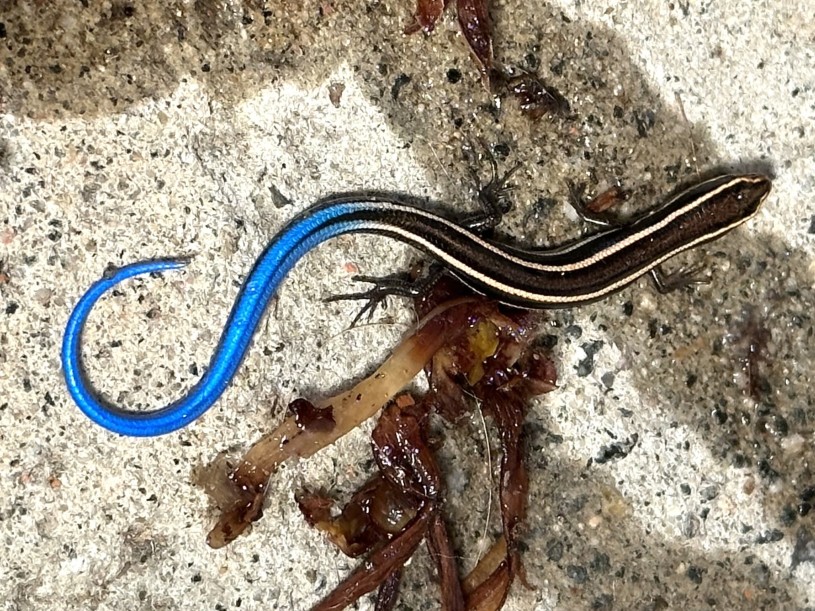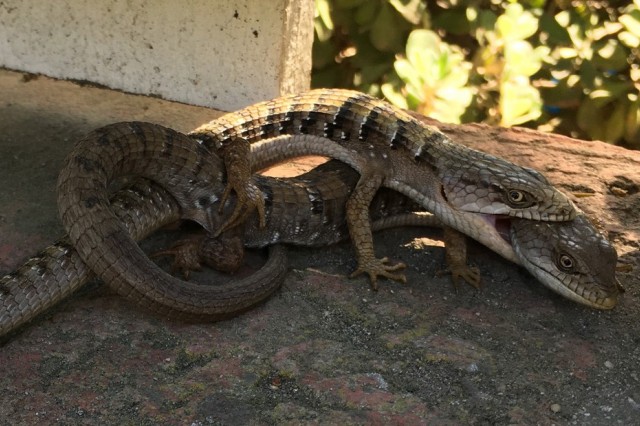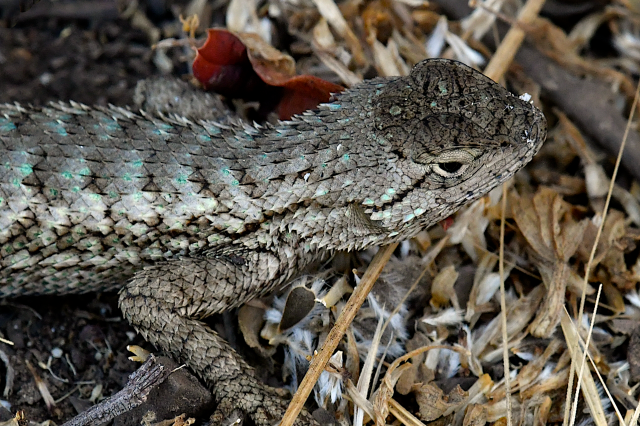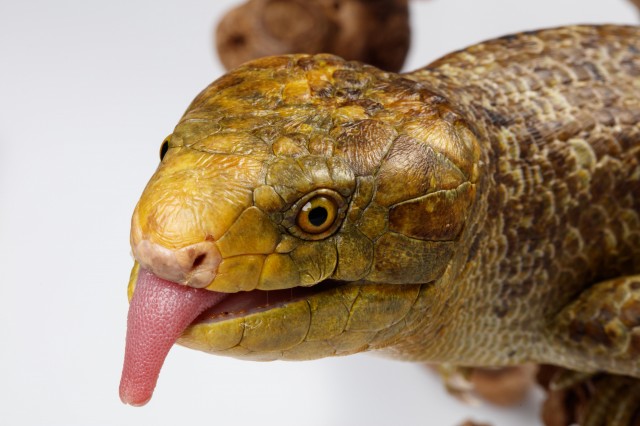A New Skink in Town
How an iNaturalist observation of a non-native lizard could help protect Southern California’s native species—and its economy
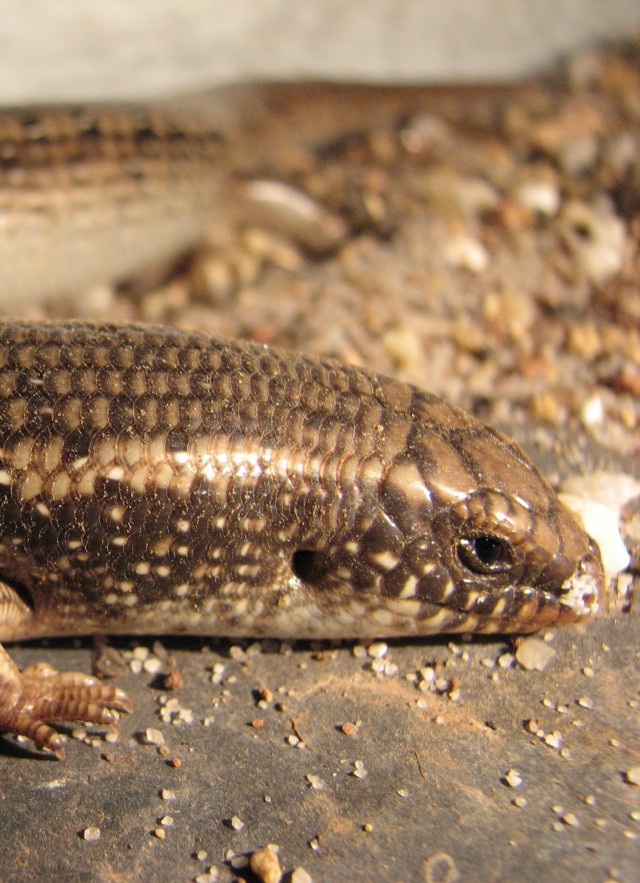
April 23, 2024
With more than 1,500 described species, skinks are one of the most diverse families of lizards, and we can now say that Chalcides ocellatus, the ocellated skink from the Mediterranean is calling Southern California home.
Reported in the journal Herpetological Review, the discovery, which stemmed from an iNaturalist observation, could blossom into a greater understanding of how non-native species are getting here—and how to protect the region from them.
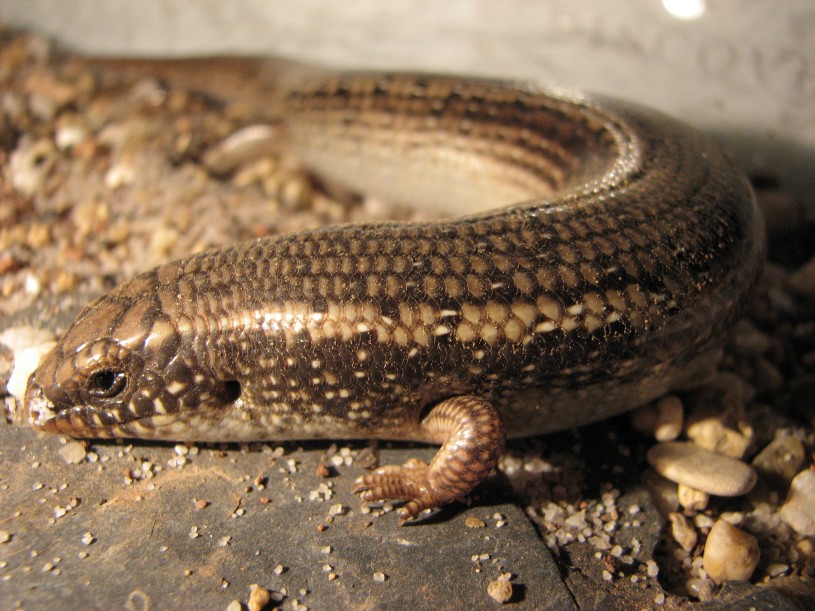
“Ocellated” refers to the markings along the skink’s back that resemble eyes, an intricately beautiful pattern that reflects the thousands of iNaturalist observers helping biologists like Dr. Greg Pauly, NHM’s Herpetology Curator, keep their eyes on more of the plants and animals in the region than any one person could do on their own. Pauly also runs RASCals—Reptiles and Amphibians of Southern California—an iNaturalist project dedicated to documenting occurrences of native and non-native animals. Community science is an especially useful way to document nature in suburban areas dotted with private property inaccessible to even the smoothest talking biologists. iNaturalist and the projects it hosts leverage the eyeballs and access of the folks living in a community to document the wildlife sharing their space.
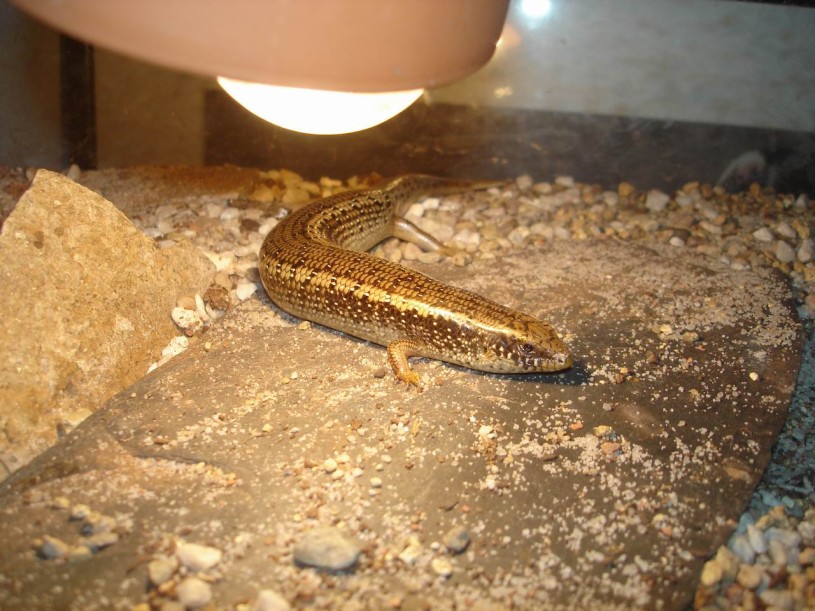
iNaturalist users photograph wildlife they see and upload them to the app, where experts then verify the particular plant, animal, or fungus. When Pauly saw the observation by iNaturalist user (and now co-author of the study) Joseph Kennedy, he knew he had to follow up. But why is it such a big deal if one little non-native skink starts living its California dream?
“There are several main reasons we want to document non-native lizard species,” says Pauly.
“What we see is that for some of the non-native lizards that have shown up in Southern California like the Italian wall lizard, they actually displace our native lizards. So there's immediate ecological impacts,” says Pauly. “There's also the potential that they could have impacts on other native species. For example, 10% of the Italian wall lizard’s diet is caterpillars, and these lizards are marching towards the last remaining breeding habitats of one of the most threatened species of butterflies—the Palos Verdes Blue. When you put those two things together, you could have a real big problem.”

Maybe you don’t care about native lizards or one of the rarest butterflies on Earth—you should—but there are more economically driven concerns about the movement of non-native species. Today’s adorable skink could be tomorrow’s citrus pest. A non-native species is simply one that is not naturally found in any given region, but an invasive species is one that damages the ecosystem by consuming or outcompeting the plants or animals that naturally occur there.
Globally, biological invasions cost the world's societies a staggering $1.288 trillion between 1970 and 2017 according to a study in Nature. Many of those dollars are spent trying to eradicate or manage a species after it has been established in a new location. As an agricultural powerhouse, California’s economy is particularly vulnerable to the introduction of pests. An innocent skink might not seem like a threat to the farms and orchards of California, but more pernicious creatures could be traveling to the region through the same route. Discovering how non-native species are getting in and cutting that off at the source or carefully monitoring it is infinitely more achievable and cost-effective than finding a species once it’s dug into a new niche, whether that’s a farm or a nature preserve.
“We are currently doing some DNA sequencing work to determine whether these skinks were likely introduced via the nursery trade and that's actually what we think is probably going on,” says Pauly. Earlier sightings of this Mediterranean skink were based in Arizona, close to a large commercial nursery. Pauly will be looking to nail down the introduction pathway, likely using more observations from iNaturalist as well. Today’s ocellated skink could be paving the way for tomorrow’s damaging pest.
“We should be caring about this problematic new introduction pathway and what that might bring here in the future,” says Pauly. “Tools like iNaturalist help us to identify introduction pathways, and we can then work with the relevant government agencies to manage those pathways before something that causes major environmental or economic problems is introduced.”
